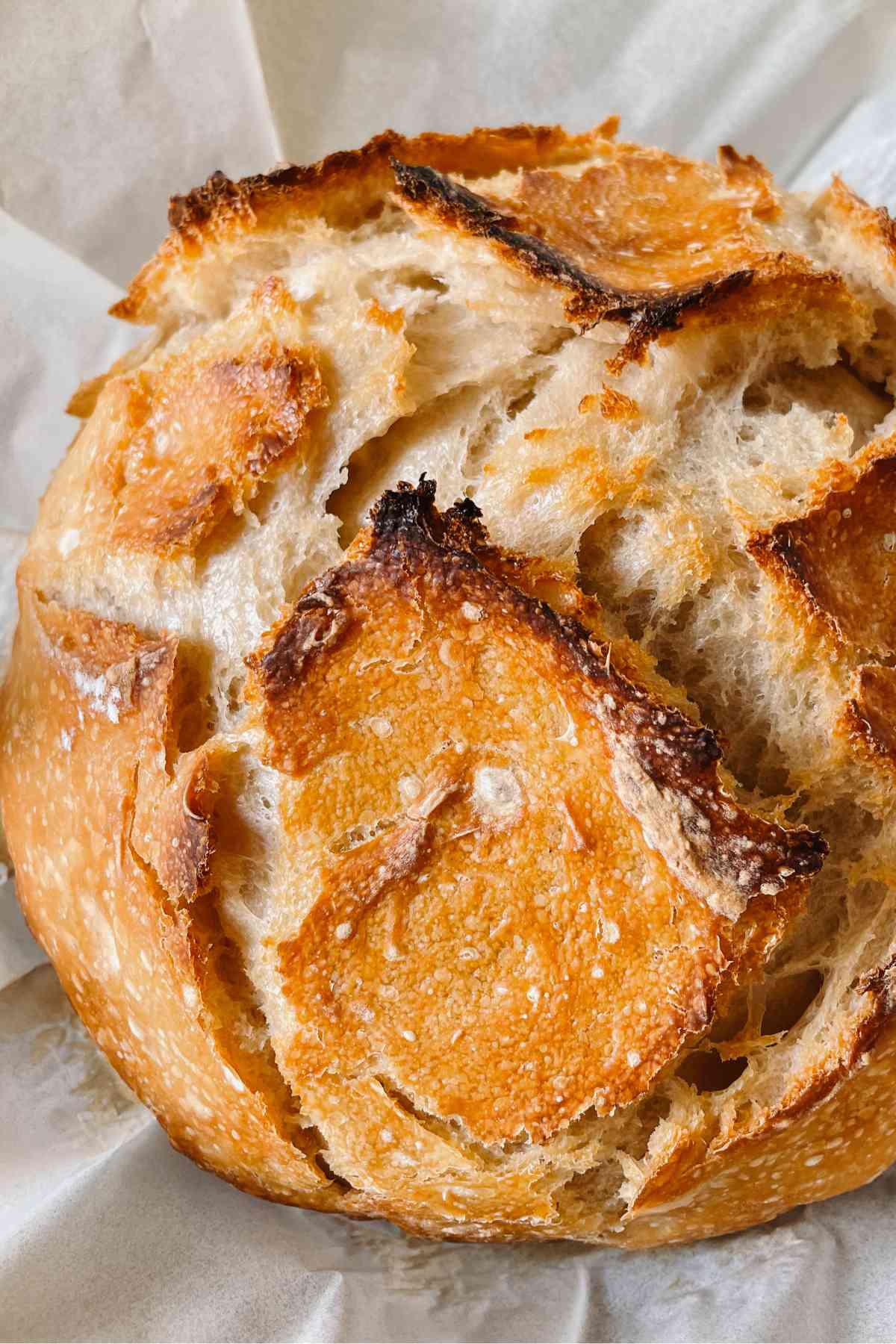Sourdough baking doesn’t always have to be complicated. This Unloaf Sourdough Bread is a beginner-friendly, no-fuss recipe that skips the usual stretch-and-fold techniques but still delivers a beautiful, naturally leavened loaf with a satisfying crust and open crumb. Whether you’re new to sourdough or just want a simpler routine, this recipe is for you.
Made with just a handful of ingredients and no commercial yeast, this unloafed version keeps things rustic and straightforward. The dough is mixed and left to rise undisturbed—no kneading, no stretching, no folding. It’s proof that good bread doesn’t need to be high maintenance.
Perfect for everyday use, this sourdough loaf pairs well with soups, sandwiches, or simply toasted with butter. Its tangy flavor and airy structure make it a staple worth mastering.
🕒 Cooking Time and Serving
- Prep Time: 15 minutes
- Bulk Fermentation: 8–12 hours
- Proofing Time: 1–2 hours
- Bake Time: 45–50 minutes
- Total Time: ~14–16 hours (mostly hands-off)
- Servings: 1 large loaf (8–10 slices)
🧂 Ingredients
- 500g bread flour (or a mix of 400g bread flour + 100g whole wheat flour)
- 375g water (room temperature)
- 100g active sourdough starter (fed and bubbly)
- 10g salt
👨🍳 How to Make Unloaf Sourdough Bread
No stretch and folds, no fuss — just mix, rest, and bake.
1. Mix the Dough
In a large mixing bowl, combine:
- 500g flour
- 375g water
Mix until no dry bits remain. It will be a shaggy dough. Cover and rest for 1 hour (this rest is called autolyse).
2. Add Starter and Salt
Add:
- 100g active sourdough starter
- 10g salt
Mix thoroughly using your hands or a dough whisk until fully incorporated. The dough will be sticky and wet — that’s okay.
3. Bulk Fermentation (No Stretching!)
Cover the bowl with a damp towel or plastic wrap. Let it rise at room temperature for 8–12 hours, depending on room temperature. It should double in size and look bubbly on top.
4. Shape the Dough
Lightly flour a surface. Gently turn the dough out. Shape it into a rough round or oval using a bench scraper. Avoid deflating it too much.
Transfer the shaped dough to a proofing basket or bowl lined with a well-floured kitchen towel. Cover and proof for 1–2 hours at room temperature, or refrigerate overnight (8–12 hours) for extra flavor.
5. Bake the Bread
Preheat your oven to 450°F (230°C) with a Dutch oven inside.
Once hot, remove the Dutch oven, gently turn the dough onto parchment paper, score the top with a sharp blade, and transfer it into the pot. Cover with lid.
- Bake covered for 25 minutes, then uncover and bake for 20–25 minutes more, until deep golden brown.
Let the bread cool for at least 1 hour before slicing.
📝 Notes
- For a slightly lighter crumb, use all bread flour.
- Your starter should be at peak activity: bubbly, doubling in size within 4–6 hours after feeding.
- If your dough feels too wet to shape, lightly flour your hands and surface but avoid overdoing it.
- No Dutch oven? Bake on a preheated baking sheet with a tray of hot water in the oven for steam.
❓FAQs
Q: Can I use all-purpose flour instead of bread flour?
Yes, but bread flour gives a chewier texture and better rise. All-purpose flour will result in a slightly denser loaf.
Q: Can I refrigerate the dough before baking?
Yes! After shaping, refrigerate the dough for up to 12 hours. Bake straight from the fridge.
Q: Why is there no kneading or folding?
This recipe relies on time and natural fermentation to develop gluten. It’s slower but still effective and beginner-friendly.
Q: My dough didn’t rise much. What went wrong?
Check your starter’s activity level. An underactive starter is usually the cause of poor fermentation.
🔢 Nutrition Information
Per Loaf (Whole Recipe)
| Nutrient | Amount |
|---|---|
| Calories | ~1600 kcal |
| Carbohydrates | ~320g |
| Protein | ~50g |
| Fat | ~5g |
| Fiber | ~12g |
| Sodium | ~2000mg |
Per Slice (1/10 loaf)
| Nutrient | Amount |
|---|---|
| Calories | ~160 kcal |
| Carbohydrates | ~32g |
| Protein | ~5g |
| Fat | ~0.5g |
| Fiber | ~1.2g |
| Sodium | ~200mg |
Values are approximate and vary based on ingredients and portion size.
⚠️ Disclaimer
Sourdough bread, while delicious and nutritious, should be enjoyed in moderation as part of a balanced diet. This recipe contains gluten and may not be suitable for those with celiac disease or gluten sensitivities. Always check with a healthcare professional if you have dietary restrictions or food allergies.

Leave a Comment